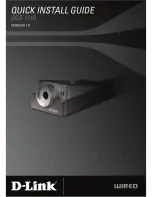
V1.02
Thom Hogan’s Complete Guide to the Nikon D300
Page 702
Worst Case Scenario
Many years of experience with digital SLRs in the field has led
me to this conclusion: humidity changes are your worst
enemy when it comes to dust.
What happens is one of two things: (1) any slight dampness
(condensation) on the filter will tend to increase the surface
tension dynamics and literally suck dust right up to the filter;
or (2) dust already on the filter gets a light condensation on
top of it, which “welds” the dust to the filter.
Either way, when the humidity lowers and the water vapor
dries up, it tends to act as a “sealing coat” on top of the dust.
In really bad conditions you may even see a faint ring (dried
water)
around
the dust spot on your images (I call these dust
zits). This kind of dust problem is very difficult to clean, as
you have to use both strong wetting and some pressure to
remove them. I learned this one the hard way by coming
down from the cold dry air at 10,000 feet on a Hawaiian
volcano to the warm moist air in a garden at sea level in the
space of an hour. Not only did it take another couple of hours
to rid the condensation out of my lenses, viewfinder, and
elsewhere, but it was as if I had baked the dust onto the filter.
It took me several tries to get the dust off.
Temperature Considerations
Several temperature-related issues when using a D300 should
be noted:
• Image noise increases with heat
. With long exposure times
in hot climates, you’ll sometimes see some random bright
pixels in your images (see “Hot and Dead Pixels”, see
page <79>). If you shoot in hot climates, you might want
to look for ways to keep the D300 cool. Be careful of
introducing condensation problems by moving the D300
from very cool to very warm conditions, however. If the
temperature is over 80°F (27°C) and you shoot images at 8
seconds or longer, consider turning the
Long exp. NR
















































